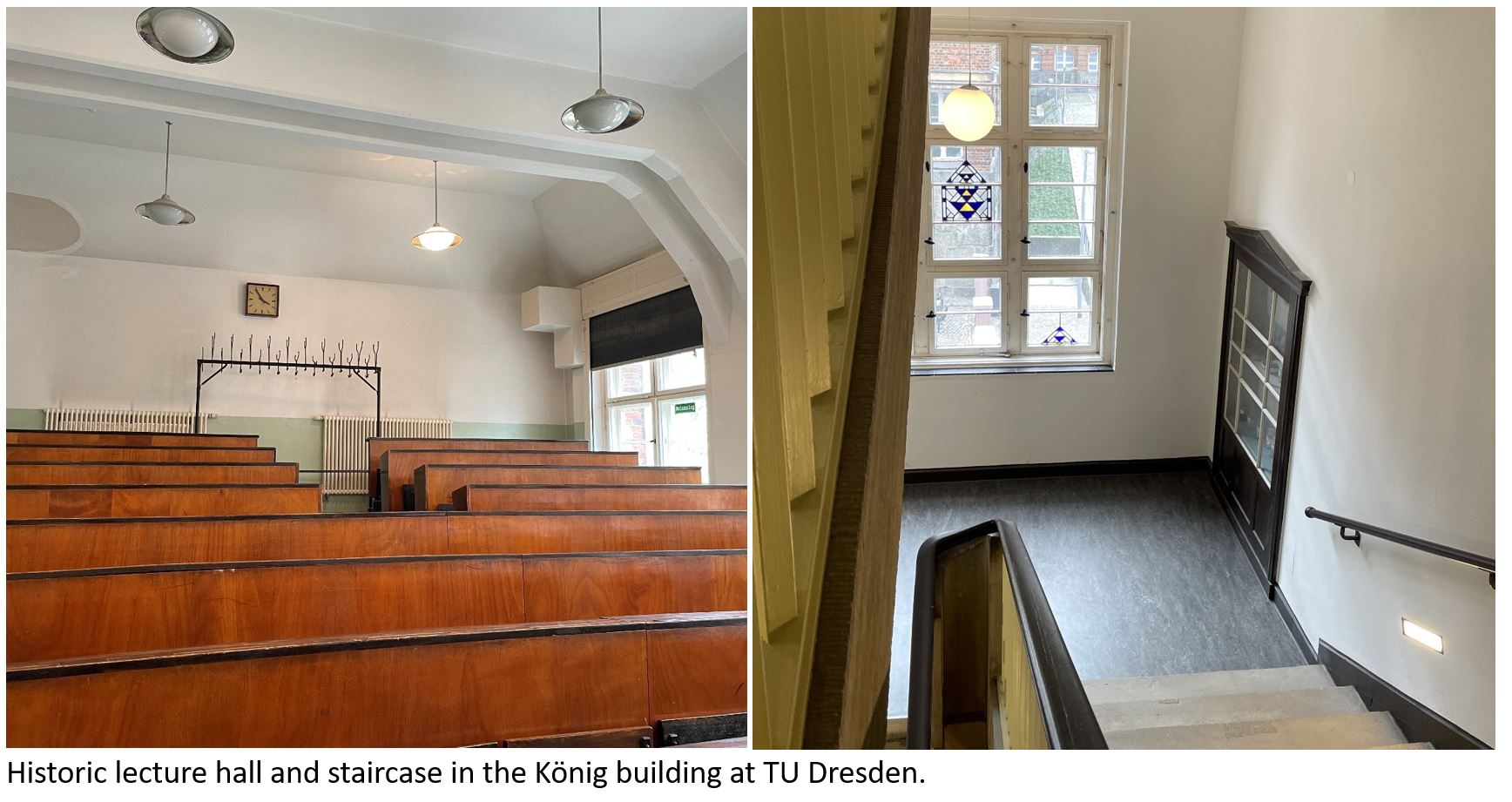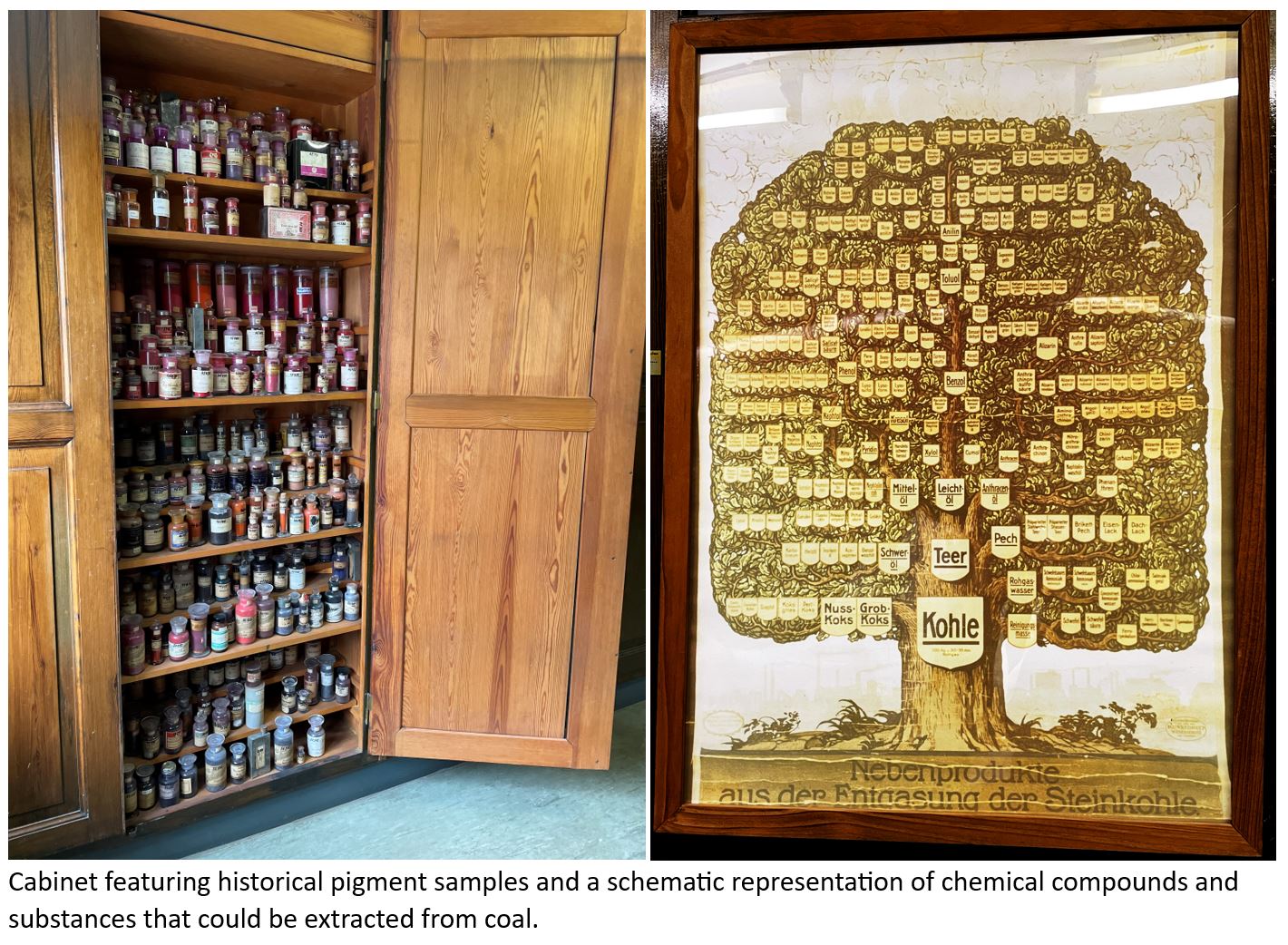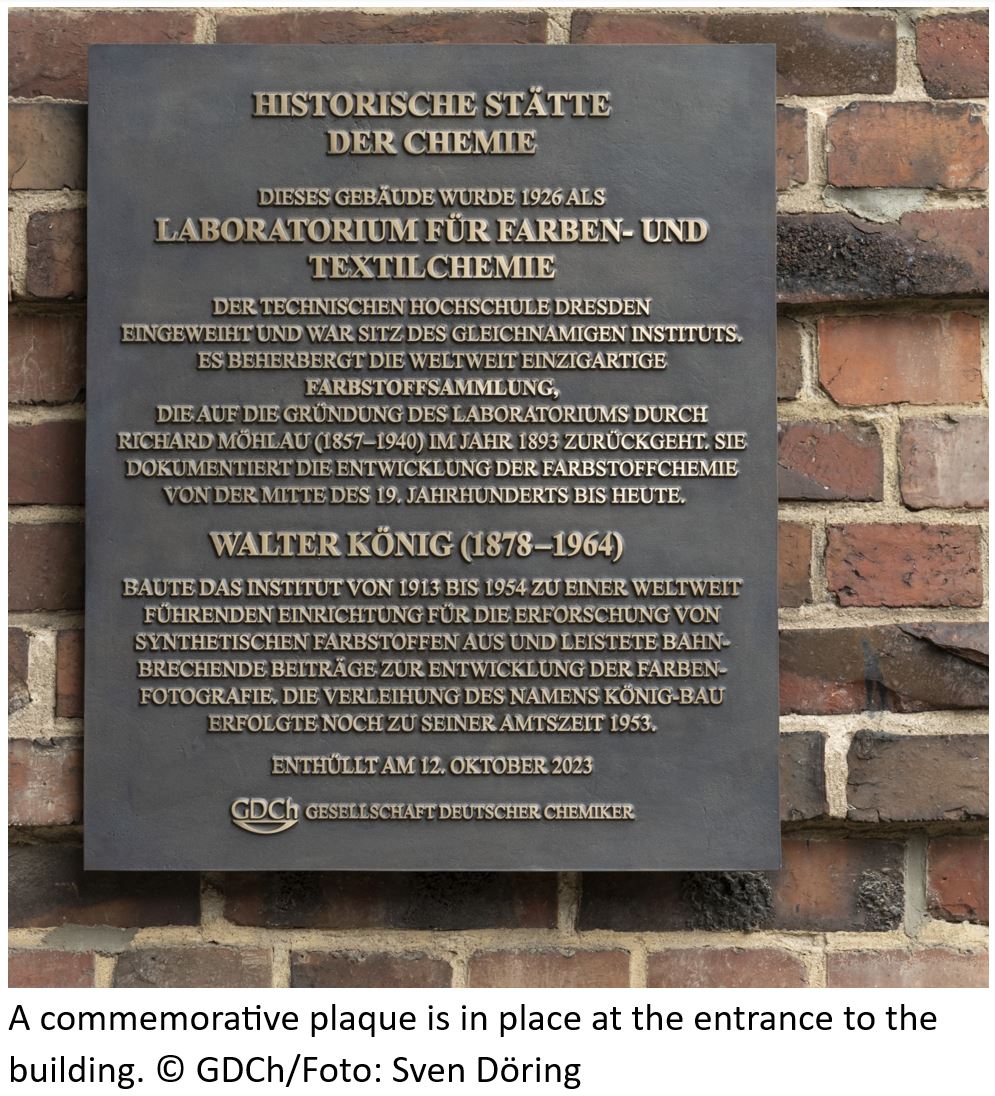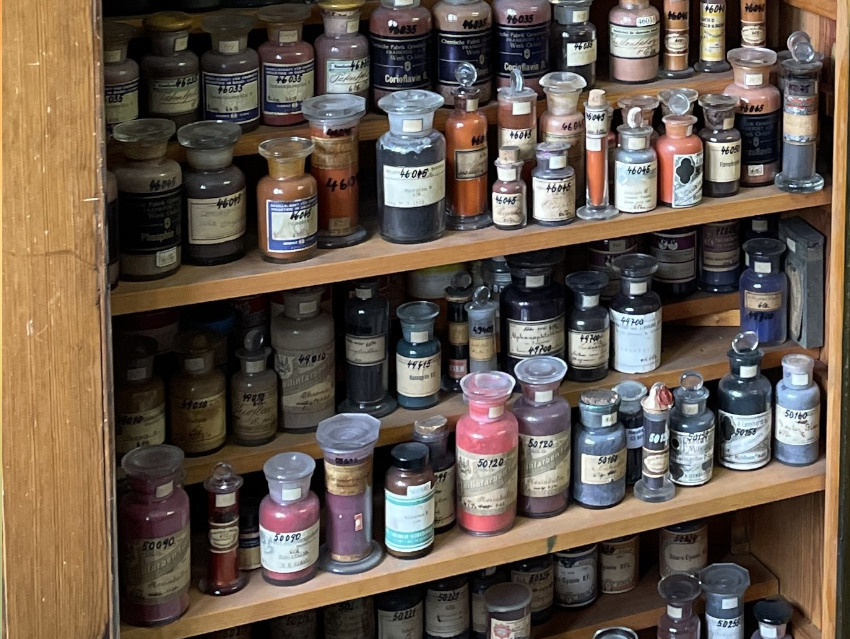On October 12, 2023, the König Building of the Technical University of Dresden, Germany, was honored as the 20th “Historical Site of Chemistry” by the German Chemical Society (GDCh). Since 1999, the GDCh has commemorated the workplaces of important scientists with plaques. The aim of this initiative is to preserve the memory of chemistry’s cultural heritage and to bring the historical roots of chemistry to the attention of the public.
König Building with Historical Dye Collection
The König Building was opened in 1926 as the Laboratory of Dyes and Textile Chemistry and the home of the Institute of the same name. Today, the building still houses a well-preserved historic lecture hall with a preparation room and laboratory, as well as one of the oldest and most extensive historic dye collections.
Huge wooden cabinets filled with thousands of tiny vials, bottles, and boxes, neatly labeled and filled with color pigments. Accompanied by delicate boxes and books containing an array of dyed fabric and wool samples. Visiting the dye collection is a most captivating experience.
The earliest samples date back to the mid-19th century. It is a unique collection that documents the evolution of synthetic dyes from the discovery of mauveine in 1856 to the present day. Mauveine, also known as aniline purple and Perkin’s mauve, was one of the first synthetic dyes, invented in 1856 by 18-year-old William Henry Perkin. He synthesized the dye by oxidizing aniline with potassium dichromate.
The beginnings of the collection can be traced back to Professor Stein, who was the first chemist to teach at the then Königliche Reichsanstalt Dresden (Royal Imperial Institute in Dresden) from 1850 to 1880 and who brought back numerous natural dyes for the collection from his extensive travels.

History of the Dye Collection
The dye collection started with Professor Stein, the first chemistry teacher at the Königliche Reichsanstalt Dresden (Royal Imperial Institute in Dresden) from 1850 to 1880. Stein brought back numerous natural dyes from his extensive travels. In 1893, Richard Möhlau (1857–1940), Professor of Chemical Textile Industry, Color Chemistry, and Dyeing Technology at the Königliche Sächsische Technische Hochschule (Royal Saxon Technical University), founded Germany’s first laboratory for color chemistry and dyeing technology along with its collection. He collected most of the collection’s oldest tar dye samples.
In 1911, Professor Hans Bucherer (1869–1949) took charge of the lab and collection, and in 1913, Professor Walter König (1878–1964) followed. In 1918, Walter König began planning a new chemical department building. In 1926, the new chemical institute, today known as Königsbau, opened on Mommsenstraße. The construction was designed by the architect Martin Dülfer (1859–1942).

The Laboratory for Dye and Textile Chemistry at the Saxon Technical University transformed into the Institute for Dye Chemistry. Between 1920 and 1945, Walter König, well-connected in industry, added countless new items to the collection, including ones from IG Farbenindustrie AG in Germany and Swiss companies. The institute achieved world renown as a center for research on synthetic dyes and their many uses. König’s early research on polymethine dyes greatly helped color photography to progress.
In 1945, the building suffered severe damage. The third floor was completely burned out, and the collection of colors underneath was at risk of water damage from rain. For this reason, the collection was temporarily relocated to safer rooms.
In 1946, the Institute for Dyes and Textile Chemistry at the Dresden University of Technology was established and the reconstruction of the institute was completed in 1953/54. After his retirement, Walter König remained provisional director of the institute until 1957. He was succeeded first by M. Coenen (1909–1960) and then by E. Baumann (1903–1986). During Walter König’s tenure as director in 1953, the institute was named the König Building.
In 1957, the Institute of Dye and Textile Chemistry was divided, with the field of dye chemistry being integrated into the Institute of Organic Chemistry under the leadership of Professor Roland Mayer in 1961. From 1960 to 1980, Bodo Hirsch (1920–2004), who later became a professor specializing in dye categories based on the Colour Index, reorganized the collection. In 1961, additional items, including dyes, pigments, sample cards, and textile aids, were acquired, including items from then-socialist countries such as Poland, Czechoslovakia (CSSR), and the USSR. In 1992, the process of cataloging all collection items into databases began.
Today, the Historical Dye Collection is managed on a voluntary basis by Professor Horst Hartmann and can be visited by appointment.
- König-Bau, Raum 209, Bergstraße 66 c, 01069 Dresden, Germany
- Website: Historical Collection of Dyes, Technische Universität Dresden, Germany. (accessed October 12, 2023)

Also of Interesty

How chemistry has created a new industry from a waste product of the coal industry

EuChemS acknowledges significance of Liebig and his laboratory for the development of chemistry

Starting from the early alchemists we take a journey through time to examine how each of these chemists pushed the boundaries of what is possible
Other historical sites that have been awarded by the GDCh include:
2019 – The Old Chemical Laboratory in Göttingen
2018 – The Pützer Tower of Merck Company
2017 – August Wilhelm von Hofmann and the founding of the German Chemical Society in Berlin
2016 – Johann Wolfgang Döbereiner and the Hellfeldsche House in Jena
2015 – Joh. Hartmann and the “Laboratorium Chymicum Publicum” in Marburg
2014 – Friedrich August Kekulé and the Old Chemical Institute in Bonn
2013 – Dr. Otto Roelen and the Ruhrchemie Plant in Oberhausen
2013 – Fresenius Chemical Laboratory in Wiesbaden
2012 – Former Salicylic Acid Factory Dr. F. v. Heyden in Radebeul
2011 – Workplace of Robert Bunsen in Heidelberg
2010 – Industry and Film Museum in Wolfen
2009 – Workplace of Ernst Beckmann in Leipzig
2008 – Workplace of Karl Ziegler in Mülheim/Ruhr
2006 – Workplace of Hans Meerwein in Marburg
2005 – Workplace of Wilhelm Ostwald in Großbothen
2004 – Workplace of Clemens Winkler in Freiberg
2003 – Workplace of Justus von Liebig in Gießen
2002 – Workplace of Fritz Straßmann in Mainz
1999 – Workplace of Hermann Staudinger in Freiburg




